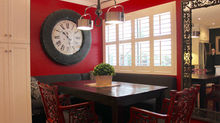L.A. Is Putting a Mini-Golf Course on Skid Row
- Atlantic City Lab
- Apr 8, 2016
- 2 min read
It’s a whimsical approach to addressing serious problems with gentrification and homelessness in Los Angeles.
Los Angeles’ newest miniature golf course will not be like any other. Instead of safari-themed obstacle courses, this one will feature edifices that address the city’s zoning issues. Oh, and it will sit right inside Skid Row, a neighborhood that has the densest concentration of homeless people in the country.
The installation, which will open in 2017 at the Skid Row History Museum and Archive, is a collaboration between educational artist Rosten Woo and the Los Angeles Poverty Department (LAPD), a performance group that consists primarily of the city’s homeless. It recently won a $50,000 grant from the Mike Kelley Foundation, which helps fund innovative artistic projects. And despite its whimsical design, the installation tackles the serious issue of the city’s development plans.
Downtown Los Angeles has become prime real estate, with luxury apartments, corporate towers, and specialty coffee shops popping up all over the once-disused area. At the same time, its homeless population has reached crisis levels, leading Mayor Eric Garcetti to issue a “state of emergency” last September. Skid Row residents now worry that zoning changes under consideration could open up their neighborhood to “market-rate housing, for example, which could ultimately displace the low-income community,” says John Malpede, founder and artistic director of LAPD.

Tough new ordinances seek to seize the property of homeless people across the city. And there's likely more to come.
The mini-golf installation is titled “The Back 9,” a term that refers to the last nine holes of a golf course as well as being a metaphor for talking privately. It’s a fitting name, Malpede says, because the project is all about transparency. “Are [zoning] decisions going to be made ‘on the back 9,’ or are they going to happen in a public process in which [decisions] aren’t predetermined by the time they’re public?”
Not only will the golf course actually be playable, it will also be a stage for performances by LAPD members—though Malpede says they haven’t planned that far ahead yet. Neither he nor Woo can say what the mini-golf course will look like just yet, but Woo gave CityLab a little hint: “Some of [the designs] will be very literal representation of aspects of L.A.’s current zoning regime, and some will be fairly conceptual,” he says. “There will still be built structures in the style of a windmill or a [typical] mini-golf course obstacle, but they’ll also represent these political and legal aspects of zoning.”
The concern with zoning regulation in this area dates back to the ‘70s, when L.A. had planned to bulldoze all of Skid Row and turn it into an upscale neighborhood. Instead, officials decided to concentrate housing and services for the homeless there as part of a “containment strategy” to isolate the poor so that the rest of downtown could develop.
“That decision in the ‘70s has allowed this neighborhood to [become a place] for permanent residents who not only now live inside houses, but are also very active in the community,” says Malpede. “The community has a lot of things going for it, including understanding and compassion.”





































Comments